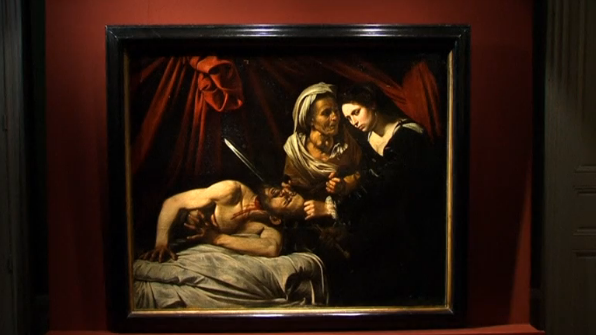
PARIS, France (Reuters) – A painting discovered two years ago in a leaky attic in the south of France is by Italian master Caravaggio and worth an estimated 120 million euros, experts said on Tuesday (April 12).
The painting, entitled “Judith Beheading Holofernes”, lay hidden for 150 years, members of the firm Eric Turquin said, before being discovered by a family in Toulouse who went into the eaves of their house looking for the source of a leak.
“The owners of this painting did not know the existence of the picture, they did not know that they have that picture because they found it in a part of an attic in which they had never been. There was a leak in the roof so to reach the roof they had to go through the attic and to break a door which they had never opened at the end of the attic. They broke the door and behind was that picture. It’s really incredible,” Eric Turquin told Reuters TV.
The family called a local auctioneer who referred them to the Paris-based firm which has carried out tests over two years, including x-ray and infrared experiments.
The painting was known to the art world through a copy attributed to Louis Finson and from a contemporary letter which describes the work, but the trail runs cold in 1617.
“A painter is like us he has tics, and you have all the tics of Caravaggio in this. Not all of them, but many of them. Enough to be sure that this is the hand, this is the writing of this great artist,” Turquin said.
The firm of experts says it welcomes the debate about whether the work is a true Caravaggio, but Turquin said that it could not itself be a copy, as has been suggested by some.
“This picture is full of invention, it’s full of pentiments, it’s full of changes, it’s full of invention, and a copyist does not invent, if not he’s not a copyist. A copyist is faithful, he’s servile, he’s just dry, but this is the opposite. It’s a picture which is painted with such an energy, but to realise that you have to get into the picture, to really come close to it and see how it is handled,” he said.
Turquin said estimating the work was a challenge as comparisons were hard, but he believed the price tag of 120 million euros was justified in light of the purchase of two less remarkable Rembrandts by the Louvre and Amsterdam’s Rijksmuseum for 160 million euros.
His colleague Stephane Pinta said the discovery was likely to send people across France scurrying to their attics to see if they were the unexpected owners of a masterpiece, but added that such cases were becoming rarer.
“What’s amazing today is that this has happened today. 20 years ago, 30, 50 years ago it wasn’t rare to find very important paintings which had been completely forgotten but today it’s become rare. It’s become rare because for 30 years the art market is very active, the art market is looking for paintings, important old paintings, lost paintings, which we know existed through descriptions, through letters, through engravings sometimes, and then this one, which no one thought about anymore, arrives like a bomb in the art market,” he said.
The painting has been awarded “National Treasure” status by the French authorities, meaning that it cannot be exported for 30 months, leaving enough time for national museums for its acquisition.







